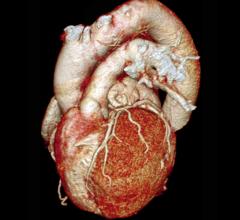May 22, 2009 - According to IMV’s recent census of cath labs in the U.S., starting in 2007 the total number of patient cases declined, with a 10 percent decline from 4.21 million in 2006 to 3.8 million in 2007, and a slight decrease of 1 percent to 3.75 million in 2008.
The healthcare analytics company said there was an estimated 3.75 million patient cases performed at 2,020 cardiac cath lab sites in 2008, including both cardiac and noncardiac patient cases. Between 2002 and 2006, cath lab patient cases increased about 9 percent from 3.85 million to 4.21 million, for an average annual growth rate of about 2 percent per year over the period. But, researchers said that rate has declined over the past two years.
“This slowdown in patient cases handled by cath labs is due to the convergence of several factors that have primarily affected both diagnostic and therapeutic coronary cases,” said Lorna Young, senior director, market research at IMV. “With the advent of CT coronary angiography procedures (CTA), the volume of diagnostic cath procedures appears to have declined. It is possible that a controversy in the use of drug eluting stents that developed in 2005/06 resulted in a reduction in therapeutic coronary cases. In addition, the increased use of preauthorization policies by third-party insurers may be at play. Taken together with the current economic downturn, the market for cath lab purchases will be slow over the next few years.”
However she said cath labs are not standing still. At the same time that coronary case volume has slowed, Young said there has been an increased volume of other types of cardiac procedures between 2006 and 2008, such as electrophysiology procedures and cardiac device placements being performed in the cath lab, as well as an increase in noncardiac cases, such as carotid, iliac, femoral, run-off, renal and extremity studies. Moving forward, 25 percent of the cath lab sites are planning to purchase intravascular ultrasound systems, which is up from five years ago, she said.
IMV's “2008 Cardiac Cath Lab Market Summary Report” describes trends in patient cases, cath lab imaging systems, diagnostic review stations, electrophysiology, intravascular ultrasound, hemodynamic systems, device utilization, contrast media utilization, power injectors for cath contrast, capital and consumables budgets and site operations characteristics.
Highlights include:
• 38 percent of the cath lab sites had one room, 35 percent had two rooms, and 27 percent had three or more rooms.
• At least 89 percent of the planned cath lab purchases over the next three years will have flat panel image digital detectors.
• The proportion of cath labs having dedicated electrophysiology rooms in the department has increased from 23 percent to 33 percent over the past decade.
• In addition to cardiologists performing non-cardiac cases in the cath labs, endovascular surgeons are the second most likely to be performing non-cardiac cases in cath labs, doing so at 35 percent of the sites, and interventional radiologists are performing noncardiac cases in 18 percent of the cath lab sites.
The data source for this report is interviews conducted in 2008 and early 2009 for IMV’s Cardiac Catheterization Lab Census Database, which provides comprehensive profiles of cath labs in the U.S. The database can be licensed by qualified subscribers and includes contact and site-specific information.
IMV Medical Information Division is a marketing research and consulting firm founded in 1977, specializing in medical imaging and other advanced healthcare technology markets.
For more information www.imvinfo.com


 December 19, 2024
December 19, 2024 








